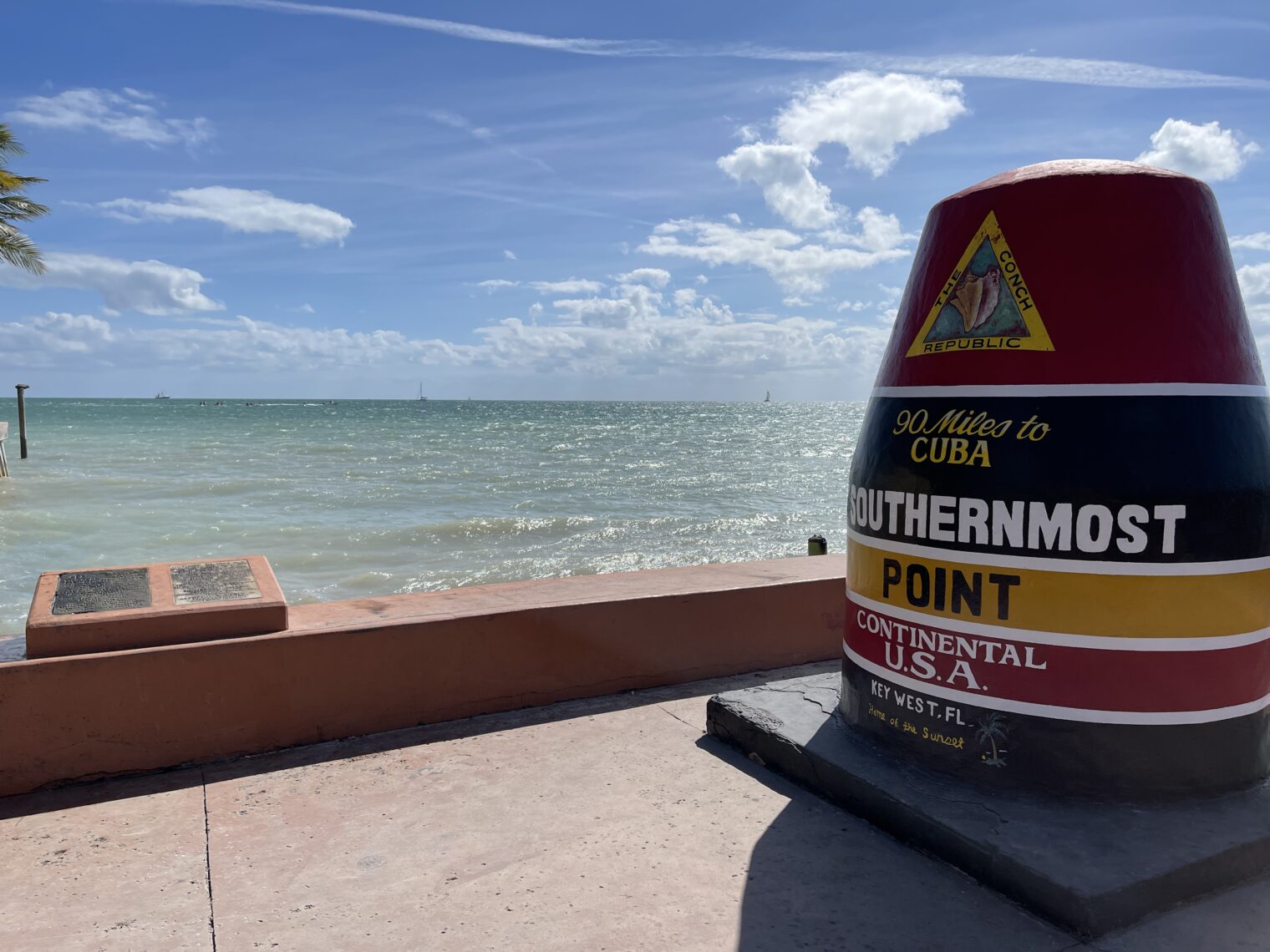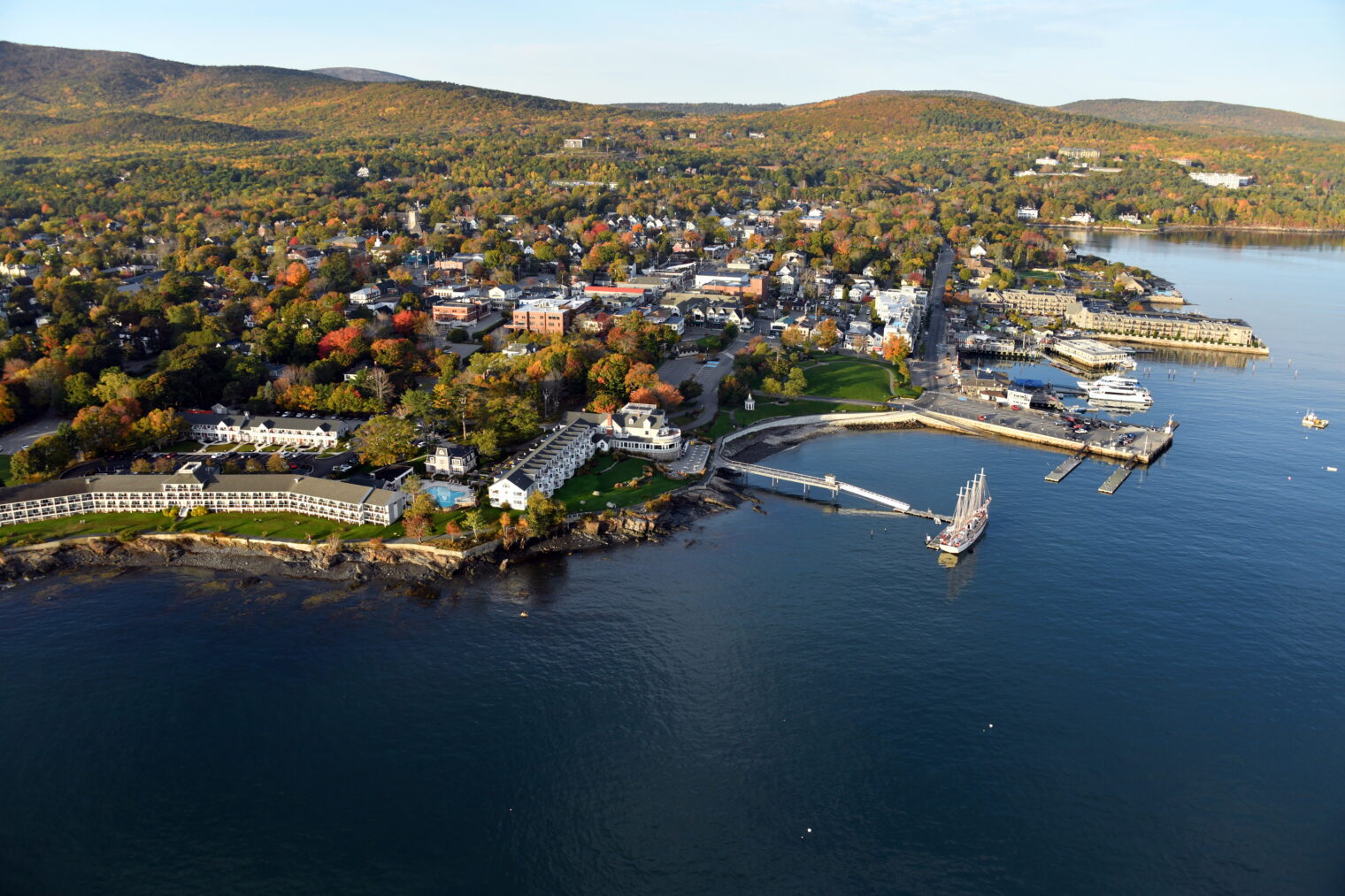Google Calendar informs me, via its “Holidays in United States” calendar, that today is both Columbus Day and Indigenous Peoples’ Day. So… to all readers who celebrate incompetence and the rejection of #Science (regarding the size of the earth that we’ve used science and science-inspired engineering to nearly destroy), Happy Columbus Day! (And for the rest of us, Happy Indigenous Peoples’ Day (enjoy our stolen land for 364/365 days per year; reflect on our theft 1 day per year while… taking the day off (government workers) and enjoying our stolen land that we refuse to return).)
Today would be the perfect exchange date for an aircraft in a 50/50 partnership between a Florida resident and someone in the Northeast or Chicago.
One thing that I’ve figured out after a couple of months living in Florida is that a simple aircraft is kind of useless here in the summer in the same way that a four-seater is useless in the Northeast in the winter. Based in Boston, a four-seater can’t get through icing conditions in the winter. On the days where icing isn’t a concern, the plane doesn’t have enough range to get anywhere that you’d probably enjoy going. Do you want to be at the beach in Provincetown or Martha’s Vineyard in February? Maybe you’d want to go to NYC for a business meeting, but the U.S. seems slated for permanent coronapanic (i.e., the meeting will be on Zoom) and, in any case, it can be complicated getting a piston aircraft properly preheated as a transient (the engine will be damaged if started when temps are below freezing). (Avid skier? Mountainous terrain is suboptimal for building airports. It will probably be just as fast to drive to the ski resort as it would be to drive, preflight, fly, stow plane, and transfer into a rental car (if the U.S. ever has rental cars again).)
None of the above factors apply to Florida, right? Well… there seem to be afternoon thunderstorms here all summer and they can last until 10 pm or even later. Unless the family is extremely flexible and doesn’t mind spending a lot of time waiting out weather in FBOs, it is probably not possible to plan an out-and-back day trip in a simple airplane. So the T-storms are kind of the Florida equivalent of icing in Maskachusetts. What if it isn’t raining, but there’s a layer of cumulus clouds under which the air is bumpy and unpleasantly warm? In the Northeast, you’d be above the clouds and bumps at the simple airplane’s optimum cruising altitudes of 6,500 and 7,500′. In Florida, you might need to go well over 10,000′, where both airplane and humans will be gasping for breath, to get into reasonably smooth air.
Suppose that there is a rare dry day. Now you’re free to go anywhere that is within comfortable reach of a C172, Piper Warrior, or SR20 (i.e., 150-300 miles). Why would you want to? If you want to bake in 90-degree heat and 90-percent humidity you can do that at home. It is the same issue as the rare beautiful February day in New England. The airplane will take you from bitter cold to ever bitterer cold or, sometimes, to slightly less bitter cold.
As folks in the Northeast have to find excuses to fly in the winter and keep the airplane’s engine from corroding, folks in Florida will have to do summer breakfast flights and get back to the hangar by 11.
What about a partnership where the aircraft lives in Chicago, Boston, Maine, New Hampshire (the “semi free state”), Vermont, or wherever starting around April 10, i.e., just after Sun n Fun. Then, in celebration of Indigenous Peoples’ Day, the plane is ferried to Florida through the beautiful lands that were some of the first parcels that white people stole from the Native Americans. (We could also call this “Benefits of Immigration from the Perspective of Natives Day”)
The arrangement could be tweaked with a feature whereby a partner can come visit the plane a few times during his/her/zir/their “off season” and fly it a bit, e.g., a Bahamas trip from Florida in the winter (just need to arrange 8 COVID-19 tests for a family of 4) or a summer trip around Maine and Canada.
This will have all of the financial benefits of aircraft partnership. Most fixed costs (capital, depreciation, insurance) will be cut in half. Hangar has become super expensive almost everywhere in the inflation-free United States, but perhaps the vacant months wouldn’t be too punishing due to the potential for subletting. (Or, for an older plane, just do tie-down at both ends.) It has the added benefit that the plane gets repositioned to a great place for the partner to fly in his/her/zir/their off season..
(Note that the above arrangement does not make sense for pressurized turboprop or turbine-powered aircraft, which can airlift a family in mask-free comfort from Hartford, CT to the golf course in Pinehurst, NC (KSOP). This proposal is about airplanes that cost $1.2 million (Cirrus!) new and that depreciate down to $40,000 used (older Cessna 172 or Piper Warrior prior to the recent price doubling that cannot be described as “inflation”). And it’s not a proposal for those rich/flexible enough to spend 6 months in the north and 6 months (plus 1 day for all of my friends who are Democrats and say that they support higher taxes and bigger government) in Florida. The 183-dayers can take their airplanes back and forth themselves. The above proposal is more for families that have kids in school and/or adults at work and are mostly stuck in their respective home locations.)
The plane can visit Disney World and Key West in the winter:
And Bar Harbor, Maine and Quebec City in the summer:
Readers: Modified Passover question… Why is this idea stupid like all of my other ideas?
Related:
- ShareMyAircraft.com (currently designed to help people based at the same airport all year share)





Or just move to the south west where you can use your plane all year round! But seriously I thought the plan of our kind host was to avoid Florida for the summer anyways. Wouldn’t you want to keep the cirrus with you when you spend a month or 2 in Maine?
Toucan Sam: I’m not sure that this is ideal for us, though it might be! We might be out of the U.S. entirely for at least part of the school summer break and wouldn’t be able to use any U.S.-based airplane.
How many pilots will diligently go through recurrency training after taking six months off from flying every year?
I do appreciate that the time-share aspect solves one problem of airplane partnerships, namely that while small planes, outside of flight schools, are grossly underutilized they tend to be in-demand on common days. That is, both you and your partner end up always wanting to fly on the same day,
Daniel: You raise a good point, but the fact is that the typical pilot anywhere needs annual recurrent training. Why not have it happen at the beginning of the pilot’s 6 months? And part of it could be the ferry trip with the co-owner. In New England, even those who technically can fly year-round also need recurrent training in the spring. They’ve not flown too much during the winter and certainly they haven’t flown IMC in the winter (due to icing). At least with this 6-month on/6-off schedule, the need for recurrent training becomes obvious!
Just move to Greenspunchussets in summer & Fl*rida in winter. At least you now know about the summer weather pattern. Prices should only have gone up another 50% since you sold the mansion.
lion2: I don’t think that we would want a second home anywhere. The school vacation is only about 10 weeks. We need to spend one of those weeks at Oshkosh (EAA AirVenture), plus another week getting to/from OSH. Now we’re down to 8 weeks. The kids love to travel and see new stuff. So figure 3-4 weeks every year of sightseeing. Now we have 4-5 weeks left. We may be able to stay with a friend in Maine for a week. Now we’re down to 3-4 weeks. That’s a summer rental, not a summer house.
(Note that Massachusetts, even before becoming a world high point of COVID-19 death rate, was a place from which rich people sought to escape in the summer. Folks with money who live in the Boston area will often have a summer place in Vermont, New Hampshire, or Maine (most common). MVY and ACK are within-MA options for rich people, but it can be super hot on both islands if you’re not right on the water ($10+ million; see https://vineyardgazette.com/news/2019/12/04/president-obama-buys-home-edgartown-great-pond for an example of where one can live after sounding the alarm on rising sea levels).)
Broken down to its barest essentials, you are describing a time-sharing arrangement between aircraft enthusiasts of a certain bracket, but based on geography! You’ve invented the time-share for planes! I note that ShareMyAircraft.com has “87 Available Shares and 1794 Users Looking for a Share!” so it looks as though a lot more people are interested in some kind of arrangement than there are people providing them, so perhaps this idea has real legs.
And I don’t mean to imply or impute anything to you by this – I didn’t know, myself – but May 24th is World Schizophrenia Day ( https://nationaldaycalendar.com/world-schizophrenia-day-may-24/ ). Separately, Britain celebrated National Schizophrenia Awareness Day on July 21st ( https://www.rethink.org/get-involved/awareness-days-and-events/national-schizophrenia-awareness-day/ ). I do not know if it is national holiday there. Here in the United States, Mental Health Awareness Week was October 3 – October 9 ( https://www.nami.org/get-involved/awareness-events/mental-illness-awareness-week ) capped off by World Mental Health Day on October 10 (yesterday!)
I vote that we try to consolidate all of these and put them all on October 11. Then we can celebrate Columbus Day, Indigenous Peoples Day, and World Schizophrenia Day all at the same time.
@Philg: I also have one of my rare aviation questions: “…in any case, it can be complicated getting a piston aircraft properly preheated as a transient (the engine will be damaged if started when temps are below freezing).”
Is this because most piston aircraft engines are air-cooled? Why is it that in 2021, we can drive down to a Chevrolet dealership and buy an ordinary car (well, assuming they have any inventory that hasn’t been decimated by chip shortages, “supply chain” problems and container ships bunched up at ports) like a Chevy Malibu that you can started and drive even in subfreezing weather without any problems, but piston aircraft require complicated procedures?
Alex: https://www.aopa.org/news-and-media/all-news/2019/april/pilot/savvy-maintenance-crimes-and-misdemeanors says “the biggest culprit in cold-start damage is that our engines are made of dissimilar metals with different expansion coefficients. The crankcase, pistons, and cylinder heads are made from aluminum alloy, while the crankshaft, connecting rods, piston pins, and cylinder barrels are made from steel. Aluminum expands about twice as much as steel when heated, and contracts about twice as much when cooled.”
I’m not sure this answers your question, though, since some car engines also include aluminum components. https://www.aviationsafetymagazine.com/features/cold-engine-starts/ more explicitly addresses the car v. airplane engine issue, but maybe not convincingly.
Even though I am not Phil I am happy to answer the question. You are exactly right. The aircraft engines (and oils) we use today and not too different than engines of the 1920’s. They are all air cooled! If they are started too cold it creates a number of problems. First the oil will be more like glue and will not lubricate the engine properly. Second the pistons, rings and cylinders tolerances will all out of wack because different metals contract a different amount in the cold. Car engines use modern multi weight oils and have much tighter tolerances which are engineered for colder weather. That being said in extreme cold areas car companies still offer engine block heaters and remote starting to get the engines up to operating temperatures before power is applied to the engines.
@Toucan @Philg: It makes sense and along the lines of what I thought I would hear; I’m glad it’s nothing more esoteric than that. And yes, I think block heaters are beneficial and worthwhile in cold weather, even in Massachusetts (as opposed to say, Nome.) Speaking of oil of various kinds and viscosity, TC is correct about modern cars having close manufacturing tolerances, which makes the behavior of lower viscosity oil important, especially in the winter.
Vintage car guys hear Jay Leno talk once in a while about how he treats Italian cars differently by allowing their engines to warm up past the point that the oil temp. gauges come off their low pegs before “he puts his foot in it:” his explanation is that a lot of vintage Italian cars have relatively small oil passages that impede the flow when oil is cold and starve out the bearings and valvetrain. So you don’t want to jump into that old Miura and roar off right away, hammering on the V12, at least until it’s warm.
I have used Mobil 1 synthetics of various kinds in every car I’ve owned or that has been in my family for the past 20 years. Right now I use 0W-20 Advanced Fuel Economy in my 2010 Ford, which calls for 5W-20 but runs better with the 0W oil in cold weather. I also have no doubt that good synthetic oils flow better than conventional oils do in those conditions.
This isn’t scientific, but it’s a pretty good comparison between 5W-30 conventional and 5W-30 synthetic – both made by Pennzoil. The synthetic oil – even the same viscosity range – flows better when it’s subfreezing (in this case -5 degrees F) and it’s not difficult to see.
Alex,
Here is a great example of what happened when they tried modern synthetic oils in small planes. https://www.avweb.com/features/mobil-av-1-under-attack/
@Toucan Sam: Wow. Lead scavenging problems. I would never have foreseen that and I guess nobody else did, either. Whew.
10,000′ and gasping for air? I skied at 11,000′ and it felt OK. Don’t small airplanes always have bumpy ride? That is my assumption based on rare flying experiences.
For charter operations, the FAA requires the use of supplemental oxygen above 10,000′ after 30 minutes (https://www.ecfr.gov/current/title-14/chapter-I/subchapter-G/part-135/subpart-B/section-135.89 ). The requirements for private flying are looser, but following the charter rules is typically a good idea.
Will a four-seat Cirrus be bumpy if flown on a calm-wind morning? Certainly not! Will a Boeing 737 be bumpy at low altitudes on a windy afternoon near the mountains or on a hot afternoon anywhere? Almost always. If you visit https://www.aviationweather.gov/gairmet and select only “TurbLo” you can see the parts of the country where the FAA expects the ride to be bumpy (usually only up to 8,000′ in the east, but as high as 15,000′ on the truly nasty days with tremendous surface winds).
Remember no idea is a “Stupid” idea, somebody can build upon it!
This model appears to be a timeshare model for a certain amount of people to own a slice of the aircraft. The pricing model might need to be adjusted for the primary location and the primary operator. For example, April-October, the Boston shareowner pays more, but the Florida resident still pays some as well. Then that shifts in October.
This model looks like it could apply to large boats as well. October is one of the last months to start driving the boat down the East Coast in order to park it in the South to enjoy it in the winter.
@Alex
Sorry, I wrote my response prior to reading yours. You described it better than I did.
JJD – Sliced out
JJ: I don’t think it is fairly described as “timeshare” because those usually have a management company in the middle. Aircraft partnership is an old idea. The only thing that is new here is that the two partners are not at the same airport (or even in the same part of the country). The big expenses are the fixed costs and they’re usually paid in lumps, rather than monthly: capital to purchase the plane, annual insurance, annual inspection, etc. The only significant monthly fixed cost that is typically shared in a partnership is hangar.
@JJ Donovan: What philg says is right, it’s not really a “timeshare” but that’s the word that popped into my mind. I’m not joking, though: this might be very attractive to people who do the math with these planes and have noticed similar problems. Right now, it looks like there’s a lot of demand for shared aircraft and not enough supply. If he fleshed it out and explained it to them I’ll bet a lot of them would be interested. It sounds like a good idea to me.
@PhilG, @Alex:
Thanks for the clarification and update. Excellent additions to the spirited discussion to flush out ideas here.
I might be missing something very obvious here, but here we go.
Why partnership the aircraft with N strangers and have to deal with the hassle of working out when you can “own” the aircraft among the group of N? If that’s not enough, you have to deal with maintains, upkeeping, and all the other cost that comes with owning and operating an aircraft. Not everyone in the partnership group will be of same minded and before you know it, you are spending more time dealing with your partners drama (the more of them, the worse it is) than flying.
But I figured you know all this and I’m off course her (pun intended).
Assuming I got your idea right, and I say this with zero knowing of aircraft business, why isn’t there an aircraft rental business like there is for cars? How often do aircraft owners fly on average a week a month? How long are each trips? Is the cost of running an aircraft rental business too expansive vs the cost of owning your own aircraft? How about Uber for aircraft?
Why would people own a plane in partnership and not a car? The car can be used every day, but the typical private owner flies 50-75 hours per year (maybe 30 days in which an actual flight occurs). For expensive toy cars it probably would make sense to have a similar structure! Do you need to commute in a Ferrari? Probably not!
The is an Uber for aircraft! It is called Netjets or “fractional ownership” more generally. The cost ends up being cheaper than if you owned a jet and hired pilots, paid for hangar, etc., because the utilization (hours/year) is much higher and therefore the fixed costs are spread out better. Due to FAA regulations, insurance, etc., however, these have to be professionally flown. So it is more like Uber than like Hertz.
Airplane partnerships are usually pretty successful. Two-way partnerships are perhaps the best, cutting costs in half while there is potential for conflict with just one other person. I know a group of three guys at our old airport that share a very light business jet, a fun biplane, and a turbine-powered helicopter. They’ve been doing this for a couple of decades and are happy.
We were in a sailboat (yacht!) partnership for years, and it always worked best when the members were friends or associates beforehand. We rotated possession every week on Tuesday so Friday and Monday were in the same week. Asking for a swap was forbidden, but the “owner” usually offered to yield zir week if it was idle. Three seemed to be the best number of partners, giving frequent enough access, significant cost saving, and tie-breaking for optional expenses. Partner-in-possession could use, idle, or even loan the boat understanding zey were responsible for actions of their operators (this was usually just their kids camping out at the dock or daysailing). Consumables left aboard were fair game for the next user.
Just buy a new Honda Jet 2600: 10 passengers, 2600nm range, 120ft baggage, Garmin avionics, Honda reliability.
https://www.hondajet.com/en/Products/HondaJet-2600-Concept